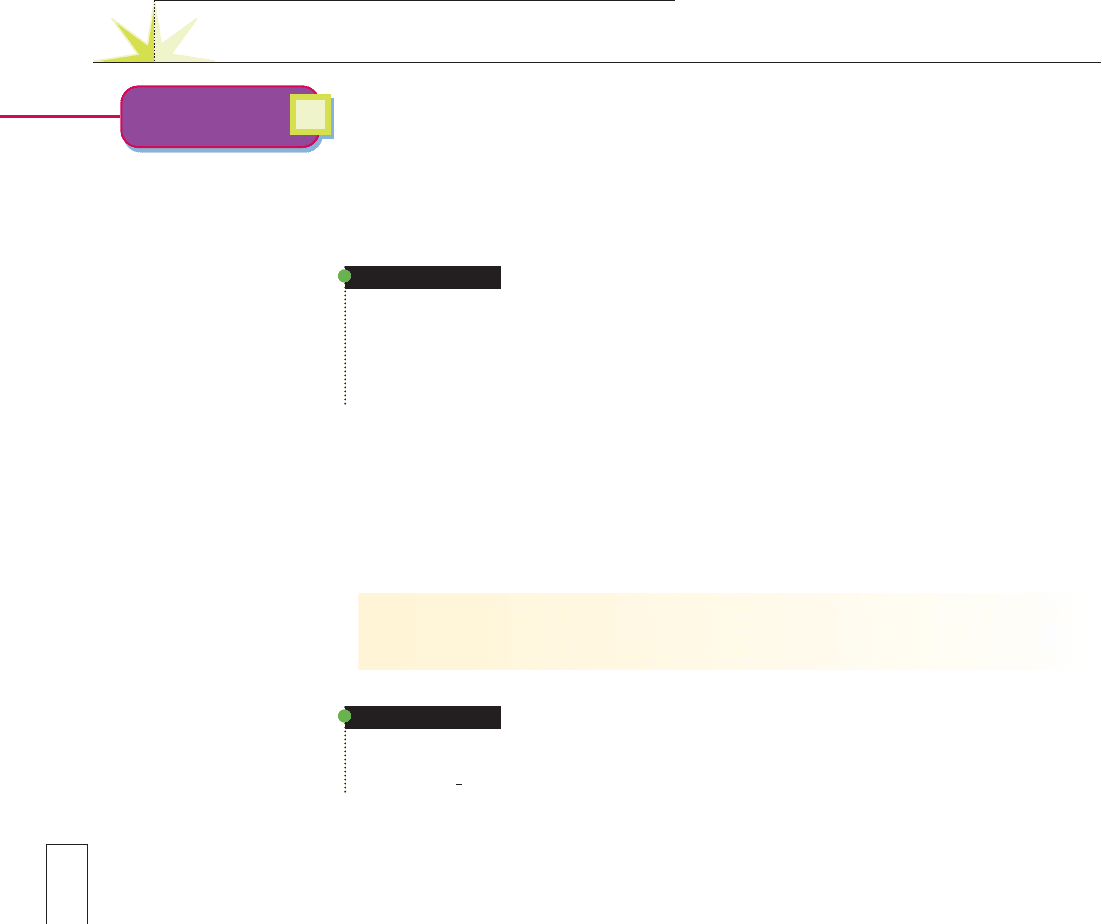Deitz J.E., Southam J.L. Contemporary Business Mathematics for Colleges
Подождите немного. Документ загружается.


4. Drivers A and B have identical insurance coverage. Driver A has an excellent driving record and receives a
15% discount on the standard premium. Driver B has numerous citations and pays 50% above the
standard rate. The standard rate in both cases is $1,600. How much more does driver B pay for
insurance than driver A?
Score for A (50)
B (50 points) Solve the following problems. (5 points for each correct answer)
5.
Tom Barton carries liability and property damage insurance coverage up to $50,000 per accident,
comprehensive insurance, and collision insurance with a $100 deductible clause. He lost control of his car
and drove through the display window of a furniture store. Damage to the building was $17,200 and the
damage to the inventory was $34,300. Damage to a bike rack on the sidewalk and three bicycles in the rack
was $1,840. Damage to his own car was $6,100.
a. What was the total property damage, excluding damage to Tom’s car?
b. How much did the insurance company pay for property damage, excluding damage to Tom’s car?
c. How much did the insurance company pay for damage to Tom Barton’s car?
d. How much did the accident cost Tom Barton?
e. If Tom Barton had been in a previous accident this year in which there had been property damage to a parked car
of $12,700, how much would the insurance company have paid for damages to everything in the current accident,
including Tom Barton’s car?
6. Amy Tan and John Rogers live in a state in which no-fault insurance is mandatory. They have identical full
coverage of $50,000 liability and property damage per accident, comprehensive insurance, and collision
insurance with a $350 deductible. John lost control of his car on an icy street and struck Amy’s car, a
parked motorcycle, and a fence. Amy had medical expenses of $780. John had medical expenses of $560.
Amy’s car had damages of $1,350. John’s car had damages of $1,750. Damage to the parked motorcycle was
$650 and damage to the fence was $320.
a. What did Amy’s insurance company pay under the no-fault provision?
b. What did John’s insurance company pay under the no-fault provision?
c. How much did John’s insurance company pay under his liability and property damage coverage?
d. How much did John’s insurance company pay under his comprehensive coverage?
e. How much would John’s insurance company have paid under his liability and property damage if he had hit Amy’s
car and five parked cars, with total damage to the six cars of $56,700?
Score for B (50)
$50,000, the maximum coverage per accident
$50,000
$1,750 2 $350 deductible 5 $1,400
$1,400
$1,350 for Amy’s car 1 $650 for the motorcycle 1 $320 for the fence 5 $2,320
$2,320
$560 was John’s medical expense
$560
$780 was Amy’s medical expense
$780
$50,000 property damage 1 $6,000 insured’s car 5 $56,000; insurance coverage is per accident, not cumulative
$56,000
$3,340 1 $100 deductible 5 $3,440
$53,340 2 $50,000 5 $3,340 damage he paid
$3,440
$6,100 2 $100 deductible 5 $6,000
$6,000
$50,000, the maximum coverage for liability and property damage
$50,000
$17,200 1 $34,300 1 $1,840 5 $53,340
$53,340
Alternative method: $1,600 3 0.65 5 $1,040
$2,400 2 $1,360 5 $1,040 more
Driver B: $1,600 3 1.5 5 $2,400
Driver A: $1,600 3 0.85 5 $1,360
$1,040
244 Part 3 Accounting Applications
Assignment 12.1 Continued

Chapter 12 Insurance 245
Assignment 12.2: Property Insurance
Name
Date Score
A (42 points) Solve the following problems. (6 points for each correct answer)
1. A building valued at $380,000 is insured for its full value. The annual premium is $9.80 per thousand
dollars of coverage.
a. How much does the insured pay to insure his building?
b. If the insurance company cancels the policy at the end of 3 months, how much refund does the insured
receive?
$2,793
380 3 $9.80 per thousand of coverage 5 $3,724 premium
$380,000 4 $1,000 5 380 thousands
$3,724
3
Learning Objectives
4
9
12
3 $3,724 5 $2,793 unused premium
$3,724 3 10% 5 $372.40 penalty; $931.00 2 $372.40 5 $558.60 refund
3
12
3 $3,724 5 $931 unused premium
c. If the insurance company has a 10% penalty clause for short-rate refunds and the insured cancels the policy after
9 months, how much refund does the insured receive?
$558.60
2. If a company pays an annual premium of $6,000 and the insurance company charges $30 per thousand
dollars of insurance, how much insurance does the company carry?
3. A company carries property insurance of $200,000 with no coinsurance clause. A fire causes $210,000 in
damage. How much does the insurance company pay the insured?
4. A company carries property insurance of $300,000 with a premium of $13.10 per thousand dollars of
coverage. A fire causes $120,000 in damage.
a. How much does the insurance company pay the insured?
b. What is the amount of the company’s benefits after its annual premium payment?
Score for A (42)
$120,000 2 $3,930 coverage 5 $116,070
$13.10 3 300 5 $3,930
$116,070
Coverage exceed damages; insurance pays full damage of $120,000.
$120,000
$210,000 damage exceeds the coverage; damages of $200,000 are paid.
$200,000
$6,000 4 $30 per thousand 5 200 thousands 5 $200,000 coverage
$200,000

B (58 points) Solve the following problems. (points for correct answers as marked)
5.
A building worth $300,000 is insured for $180,000, and the policy carries an 80% coinsurance clause. A fire
causes $220,000 in damage.
a. How much will the insurance company pay? (10 points)
$165,000
246 Part 3 Accounting Applications
Assignment 12.2 Continued
$300,000 3 80% 5 $240,000 insurance required
$165,000 is less than the $180,000 coverage, so the insurance company pays the entire $165,000
$180,000
$240,000
3 $220,000 damage 5 $165,000
$180,000—the insurance company doesn’t pay in excess of coverage
$180,000
$240,000
3 $300,000 damage 5 $225,000
b. How much will the insured pay if the building is repaired for $220,000? (6 points)
c. How much would the insurance company pay if damage to the building totaled $300,000? (10 points)
$180,000
$220,000 repairs 2 $165,000 insurance 5 $55,000
$55,000
d. If the damage totaled $300,000, how much would the insured pay if the building were rebuilt for $300,000?
(6 points)
6. A building worth $1,800,000 is insured for $1,200,000, and the policy carries an 80% coinsurance clause.
A fire causes $300,000 in damage. (Round to the nearest dollar.)
a. How much does the insurance company pay if the building is repaired for $300,000? (10 points)
b. How much does the insured pay? (6 points)
7. If an insurance company issues insurance on property valued at $400,000 with a 90% coinsurance clause,
what is the amount required to be carried by the insured? (5 points)
8. If an insurance company issues insurance on property valued at $3,000,000 with a 75% coinsurance clause,
what is the amount required to be carried by the insured? (5 points)
Score for B (58)
$3,000,000 3 0.75 5 $2,250,000
$2,250,000
$400,000 3 90% 5 $360,000
$360,000
$300,000 damage 2 $250,000 insurance 5 $50,000 paid by the insured
$50,000
$1,800,000 3 80% 5 $1,440,000 required. $1,200,000 4 $1,440,000 3 300,000 5 $250,000
$250,000
$300,000 damage 2 $180,000 insurance 5 $120,000 paid by the insured
$120,000

Chapter 12 Insurance 247
Assignment 12.3: Life and Medical Insurance
Name
Date Score
A (50 points) Refer to Figures 12-1 and 12-2 for the premium and surrender rates in solving the following
problems. Assume that every year is a full 12 months long. (points for correct answers as marked)
1. Find the rates per thousand dollars and the premiums for the following policies. (1 point for each
correct answer)
Payments Face Value Rate per Premium Paid
Age Type Made of Policy $1,000 Each Year
28 Straight Life Annually $200,000
25 20-Payment Life Quarterly 80,000
25 20-Year Endowment Semiannually 10,000
26 Straight Life Quarterly 120,000
27 20-Payment Life Semiannually 100,000
28 20-Year Endowment Annually 85,000
2. Find the cash surrender or loan value for each of the following policies issued at age 25. (1 point for each
correct answer)
Amount Cash Surrender
Policy Year Type of Policy of Policy or Loan Value
10 Straight Life $50,000
15 20-Payment Life $25,000
10 20-Year Endowment $50,000
3 Straight Life $20,000
5 20-Payment Life $75,000
4 20-Year Endowment $60,000
3. When Sue Adams was 27 years old, she took out a $75,000, 20-year endowment policy. She paid the
premiums annually and survived the endowment period. How much more did she pay in annual
premiums than she received from the insurance company at the end of 20 years? (4 points)
4. Roger Johnson purchased a $50,000 ordinary life policy and an ADB for 50% of the value of the policy.
In addition, he purchased a 5-year, $50,000 term policy. He died in an accident 3 years later.
a. How much money did Roger’s beneficiaries receive? (4 points)
b. How much money would Roger’s beneficiaries have received if he had died in an accident 7 years after
purchasing the policies? (4 points)
c. How much money would Roger’s beneficiaries have received if he had died of natural causes 10 years after
purchasing the policies? (4 points)
$50,000 ordinary life
$50,000
$50,000 ordinary life 1 $25,000 ADB 5 $75,000; term insurance would have expired
$75,000
$50,000 ordinary life 1 $25,000 ADB 1 $50,000 term 5 $125,000
$125,000
$79,800 2 $75,000 5 $4,800
$3,990 3 20 years 5 $79,800 paid in
$53.20 3 75 5 $3,990 annual premium
$4,800
$7,800
$6,975
$200
$20,550
$9,500
$5,200
$4,578.10$53.86
$3,366.00$16.83
$2,356.80$4.91
$540.80$27.04
$2,643.20$8.26
$3,860.00$19.30
5
Learning Objectives
6 7

5. At the age of 25, Carlos Baker purchased a $50,000 straight life policy, with premiums payable annually. He
also purchased a $25,000 20-payment life policy, with premiums payable semiannually. At the end of 15
years, he decided to cash in both policies.
a. How much did Carlos receive for the straight life policy? (4 points)
b. How much did Carlos receive for the 20-payment life policy? (4 points)
c. How much more did Carlos pay in premiums than the total amount received for both policies? (8 points)
Score for A (50)
B (50 points) Solve the following problems. (10 points for a correct answer to problem 6; 8 points for each
other correct answer)
6. An employer provides group health coverage that includes a $250 annual deductible per family and payment
of 80% of costs exceeding the deductible. How much would an employee with two dependents pay if her
medical bills for the year were $550 for herself; $920 for dependent 1; and $230 for dependent 2?
7. An employer provides group health coverage that includes a $500 annual deductible per family and 80% of
costs over the deductible.
a. How much would an employee with no dependents pay if his medical bills were $1,000 this year?
b. How much would that employee have paid this year if his medical bills were $7,480?
8. An employer provides group health coverage with the following monthly premiums: employee only, $350;
employee with one dependent, $450; and employee with multiple dependents, $550.
a. How much does the employer pay over a 5-year period for an employee with multiple dependents?
b. If that employee had a dependent with a catastrophic illness that cost $97,000 for hospitalization and treatments
during that 5-year period, how much would the insurance company lose on that employee, assuming that she had
no other medical claims?
c. If an employee with no dependents had no illnesses during that same 5-year period, how much would the insurance
company make on that employee?
Score for B (50)
$350 monthly 3 12 months 3 5 years 5 $21,000
$21,000
$97,000 medical expenses 2 $33,000 premiums 5 $64,000
$64,000
$550 monthly 3 12 5 $6,600 annually 3 5 5 $33,000
$33,000
$500 1 $1,396 5 $1,896 paid by employee
$6,980 3 20% 5 $1,396
$7,480 medical costs 2 $500 deductible 5 $6,980
$1,896
$500 1 $100 5 $600 paid by employee
$500 3 20% 5 $100
$1,000 medical costs 2 $500 deductible 5 $500
$600
$250 1 $290 5 $540 total paid by employee
$1,450 3 20% paid by employee 5 $290
$1,700 2 $250 deductible 5 $1,450
Total medical costs: $550 1 $920 1 $230 5 $1,700
$540
$25,095 2 $18,550 5 $6,545
$9,050 1 $9,500 5 $18,550 total received
$12,900 1 $12,195 5 $25,095 5 total paid
$16.26 3 2 3 25 3 15 5 $12,195
$17.20 3 50 3 15 5 $12,900
$6,545
$380 3 25 5 $9,500
$9,500
$181 3 50 5 $9,050
$9,050
248 Part 3 Accounting Applications
Assignment 12.3 Continued

Notes
Chapter 12 Insurance 249

Interest
Applications
Part
4
13 Simple Interest
14 Installment Purchases
15 Promissory Notes and
Discounting
16 Compound Interest

Simple
Interest
Chapter 13 Simple Interest 251
Learning Objectives
By studying this chapter and completing all assignments, you will be able to:
Compute simple interest with time in years or months.
Compute ordinary simple interest, using a 360-day year.
Compute exact simple interest, using a 365-day year.
Compare ordinary simple interest and exact simple interest.
Estimate exact simple interest computations.
Compute the Principal, Rate, and Time from the basic interest formula.
13
1
Learning Objective
2
Learning Objective
3
Learning Objective
4
Learning Objective
5
Learning Objective
6
Learning Objective

Most businesses and individuals buy at least some assets without making full payment at
the time of the purchase. The seller gives immediate possession to the buyer but does not
require payment until some later date. For example, large retailers such as Macy’s
Department Store may receive merchandise for the Christmas season but may not be
required to pay the seller until January. The seller, who extends credit to the buyer, may or
may not charge for this privilege. The charge is called interest, and it is usually quoted as
a percent of the amount of credit extended (the principal). When part of the price is
paid at the time of purchase, that part is called a down payment.
If the seller charges too much interest or does not extend credit, the buyer might
borrow money from a third party, such as a bank. The buyer would then sell the
merchandise to repay the bank loan. The amount borrowed is called the principal, and
the interest charged is a percent of the principal. The bank will charge interest between
the loan date and the repayment date. This period of time is called the interest period or
the term of the loan.
The promise to repay a loan or pay for merchandise may be oral or written. If it is
written, it may be in the form of a letter or it could be one of several special documents
known collectively as commercial paper. Short-term credit transactions are those whose
term is between 1 day and 1 year. Long-term credit transactions are those for longer
than 1 year. Normally, long-term credit transactions involve major items such as new
buildings or equipment rather than supplies or merchandise for sale.
252 Part 4 Interest Applications
Computing Simple Interest
The easiest type of interest to calculate is called simple interest. The calculations are the
same for both a loan and a purchase on credit. The interest rate is a percent of the principal
for the period of the loan or credit. The quoted percent usually is an annual (yearly) rate.
A rate of 10% means that the interest payment for 1 year will be 10% of the principal.
To compute the amount of simple interest on a 1-year loan, simply multiply the
Principal by the Rate.
1
Learning Objective
Compute simple interest with time in
years or months.
13.1 Most students will have heard the
phrase “I equals PRT.”We will write
P3R3T, but remind students that the
absence of any sign means to multiply,
as in 2x or PRT.
EXAMPLE A
Stan McSwain borrowed $1,000 for 1 year at a rate of 8% simple interest. Compute the
interest.
The principal is $1,000. The interest for 1 year is 8% of $1,000, or 0.08 3 $1,000 5
$80.
Most loans, however, are not for a period of exactly 1 year. Loans for longer periods
will require the borrower to pay more interest. Likewise, loans for shorter periods will
require less interest. To compute the simple interest on loans of any period, multiply the
Principal by the Rate and then multiply by the Time, with Time stated in years or in
fractions of years. The fundamental formula for simple interest is
Interest 5 Principal 3 Rate 3 Time
abbreviated as I 5 P 3 R 3 T or, even more simply, I 5 PRT.
EXAMPLE B
Find the amounts of simple interest on loans of $1,200 when the rate is 6% and the loan
periods are year and 4 years.
3
4

The time period often will be measured in months instead of years. Before computing
the interest, change the time into years by dividing the number of months by 12 (the
number of months in 1 year).
Chapter 13 Simple Interest 253
year 4 years
I 5 P 3 R 3 TI5 P 3 R 3 T
5 $1,200 3 0.06 35$1,200 3 0.06 3 4
5 $54 5 $288
3
4
3
4
13.2 If students do not use calculators,
they should be encouraged to reduce
fractions and cancel.Students who are
using calculators probably should not
reduce fractions because it won’t save
any time and introduces the possibility
of mental errors.
EXAMPLE C
Compute the interest on credit purchases of $3,000 at 5% for periods of 8 months and
30 months.
8 months 30 months
I 5 P 3 R 3 TI5 P 3 R 3 T
5 $3,000 3 0.05 35$3,000 3 0.05 3
5 $100 5 $375
30
12
8
12
USING CALCULATORS
Today, calculators or computers are used in almost every interest application. The num-
bers are often large and are always important. The steps are performed on the calculator
in the same order as they are written in the formula.
EXAMPLE D
Write the calculator steps for computing the simple interest on $8,000,000 at 9% for
18 months.
I 5 P 3 R 3 T 5 $8,000,000 3 0.09 3
8 000 000 .09 18 12
The display will show 1,080,000, which means $1,080,000.
With the percent key , the steps would be
8 000 000 9 18 12
The display will show 1,080,000, which means $1,080,000.
5
4
3
%
3
%
5
4
3
3
18
12
The Principal is $2,500, the Rate is 10%, and Interest 5 Principal 3 Rate 3 Time, or
I 5 P 3 R 3 T. Find the interest both for 5 years and for 6 months.
a. If Time is 5 years: I 5 P 3 R 3 T 5 $2,500 3 0.10 3 5 5 $1,250
b. If Time is 6 months: I 5 P 3 R 3 T 5 $2,500 3 0.10 35$125
6
12
✔
CONCEPT CHECK 13.1
